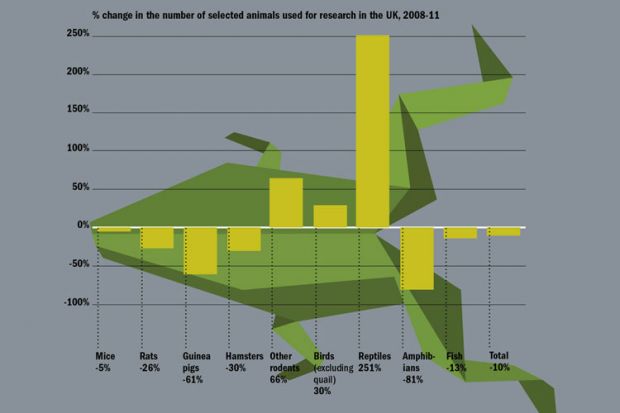The European Commission released the latest data on the number of animals used in science last month. Across Europe, researchers used 11.5 million animals in 2011, down half a million compared with 2008.
In the UK, scientists used 2.05 million animals during first-time procedures in 2011, which is 10 per cent fewer than in 2008. More than half of them were mice (56 per cent of the total), followed by fish (21 per cent) and rats (12 per cent).
Compared with 2008, the greatest drop in the number of animals used was among rats (the number used fell by 90,852), then fish (down 63,730), mice (down 56,323) and guinea pigs (down 17,736). At the same time, the number of birds used in research rose by a third (37,775).
In total, the number of mice, rats, hamsters and guinea pigs used in UK science fell by more than 165,750 between 2008 and 2011. However, the number of other rodent species used during the same period went up by more than half to 3,243.
Although reptiles comprised just 0.02 per cent of all the animals used in 2011, scientists used two and a half times as many of them as they used in 2008. The biggest drop in numbers for a specific animal type was in amphibians, with scientists using 80 per cent fewer in 2011 than they did in 2008. In 2011, amphibians comprised 0.22 per cent of all animals used.
Sources: Commission Staff Working Paper - Report on the Statistics on the Number of Animals Used for Experimental and Other Scientific Purposes in the Member States of the European Union in the Year 2008, published in 2010, and Commission Staff Working Paper - Report on the Statistics on the Number of Animals Used for Experimental and Other Scientific Purposes in the Member States of the European Union in the Year 2011, published in 2013

